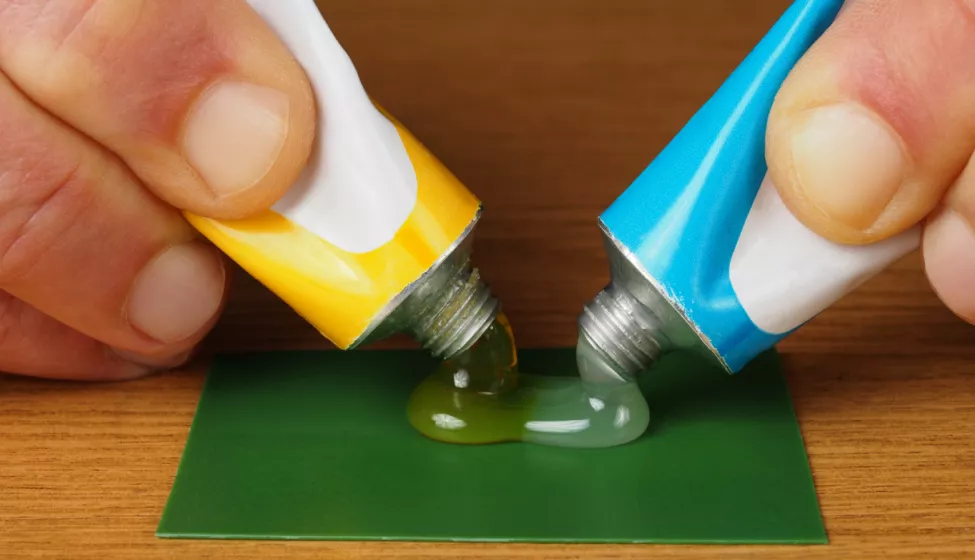March 4, 2021
Thermosets, a major class of synthetic polymers with market size forecast to reach $38 billion by 2025, are known for their excellent chemical resistance, high heat resistance, and structural integrity. Thermosets and their composites are used in a wide range of industries, including consumer electronics, textiles, aerospace, medical devices, food packaging, oil and gas, and construction.
High strength-to-weight ratio, ease of processing, and design flexibility are just some of the advantages these materials offer manufacturers of load bearing components. However, the ability of manufacturers to capitalize on those advantages typically depends on understanding the interplay between the cured molecular structure of these materials and the bulk physical properties afforded by the achieved cure.
All thermosets, including epoxies, silicones, and polyurethanes, undergo a chemical reaction to cross-link polymer chains in a process known as curing.
The polymer curing process can have a critical effect on the functionality, safety, and reliability of an end product.
Undercuring may reduce material strength or chemical resistance, whereas overcuring may negatively affect hardness, ductility, flexibility, adhesive strength, or color. When placed in service, suboptimally cured polymers with inferior physical properties may prematurely crack, fracture, or delaminate, leading to potential performance issues in the field.
Because the optimal cure state is often critical to the end-use performance of thermoset components, manufacturers may benefit from exploring the many formulation and processing factors that contribute to curing. This process benefits from understanding the many scientific techniques that can be employed to characterize the overall quality of cure achieved during fabrication.
What Manufacturers Need to Know
Manufacturers frequently inquire into the optimal state of cure for a particular polymer and whether that state can be reliably achieved during manufacturing. To answer these questions, the relationships between state of cure, the desired set of physical properties, and the expected performance of the finished product must be determined. These relationships depend on the polymer type, material chemistry, product design, substrate, and desired functional properties. As a result, determining and achieving a target state of cure requires not only an understanding of the material but also the expected end-use and required performance of the final product.
Different thermosets require different curing methods and conditions, depending on their base chemistry and other components of the formulations, including catalysts and initiators selected to enhance the curing reaction. The most common curing methods involve the application of heat or ultraviolet (UV) radiation. Curing conditions can affect the physical and functional properties of these materials in important ways.
While a material supplier may make recommendations or provide guidance related to curing methods and conditions, it is not always feasible or appropriate to directly translate these recommendations into specific manufacturing steps because of product-specific or manufacturing-site-specific factors.
Form factor, compatibility with other materials in the product, scale-up, equipment, and seasonal or regional environmental conditions such as humidity are common factors that can affect the state of cure. For example, shadowing of UV light or non-uniform temperature treatment may result in uneven cure.
The Right Tools for the Job
Degree of cure determination is frequently conducted to evaluate the extent of cure (i.e., cross-linking reaction), and it is an invaluable tool for process optimization, verification, and failure analysis. Various analytical techniques can be applied to determine the degree of cure, including mechanical, thermal, chemical, and spectroscopic techniques. Each technique has its advantages and limitations.
For example, although thermal methods such as differential scanning calorimetry (DSC) may be convenient, they are not always sensitive enough to detect undercuring. Undercuring can generate a measurable difference in mechanical stiffness or the type of chemical bonds present in the material. The former may be observable by dynamic mechanical analysis (DMA), the latter by Fourier-transform infrared spectroscopy (FTIR). Moreover, many commonly used methods are not amenable to field samples, which often have sample size and geometric constraints. In these cases, novel analytical methods that reliably address sample-specific needs may need to be developed.
Because no single method for determining degree of cure fits all polymers, product designs, and performance needs, a strong understanding of the specific polymer, the end product, and the available characterization techniques is required to determine how best to evaluate a polymer's degree of cure.
How Exponent Can Help
Exponent's multidisciplinary team of materials scientists, chemists, and chemical and mechanical engineers has vast experience in the selection, optimization, and evaluation of curing methods and conditions for polymer manufacturing. Not only do we use existing industry methods to evaluate degree of cure and product performance, we also develop novel testing methods tailored to specific product needs. For example, we have leveraged the sensitivity of gas chromatography-mass spectrometry (GC-MS) to detect undercuring of a small amount of epoxy on a printed circuit board (PCB) conformal coating.
Our team of experts can provide total product solutions from material and manufacturing process selection to product testing and safety assessments to ensure robust product performance.

